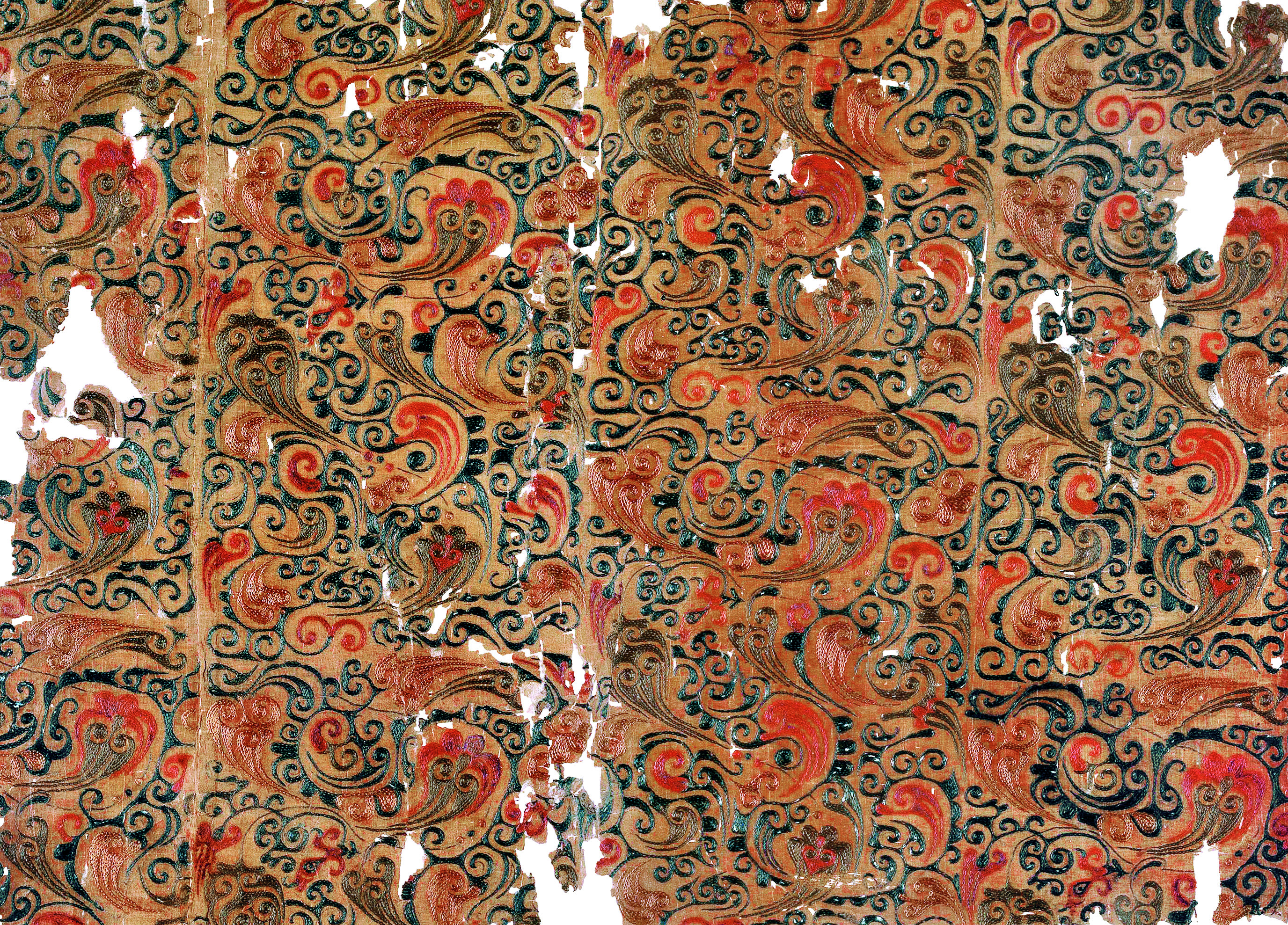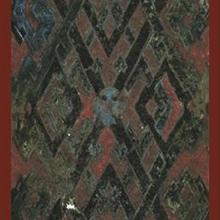Dimensions:Length: 54cm; width: 41cm
Origin: Unearthed from Han Tomb No.1 at Mawangdui, Changsha City, Hunan Province.
Embroidery of longevity on juan silk uses light brownish red, olive green, purplish grey and dark green silk threads to stitch out transformed cloud patterns, flower buds, twigs, leaves and bird-heads on thin silk. Such longevity patterns appear the most, seen in the tablecloth, pillow, mirror case, lined jacket and the remaining shroud wrapping Xin Zhui’s body unearthed from Tomb 1.
Owing to color change, the seemingly auspicious clouds spread themselves among the branches and leaves of divine trees, but a closer look reveals that auspicious objects such as dogwood and phoenix appear in the clouds.
This is possibly a transform of dragon and phoenix designs popular in the State of Chu during the Warring States Period, with a profound romantic touch and simplistic artistic feature. Dogwood is a kind of beneficial plant. Miscellaneous Records of the Western Capital mentions: “Wearing dogwood, eating lotus root and drinking chrysanthemum wine will bring long life to people.” The phoenix is a divine bird. Qu Yuan in his The Verse of Chu wrote “At my instruction the phoenix soars and flies/ And hovers unceasingly day and night in the sky”. When phoenix appears, the world is free from worries and woes; and when that happens, people enjoy longevity. In the Inventory of Burial Objects, the Han people called such embroidery as “Chang Shou (Longevity) Embroidery”. And its name is certainly well-deserved.





